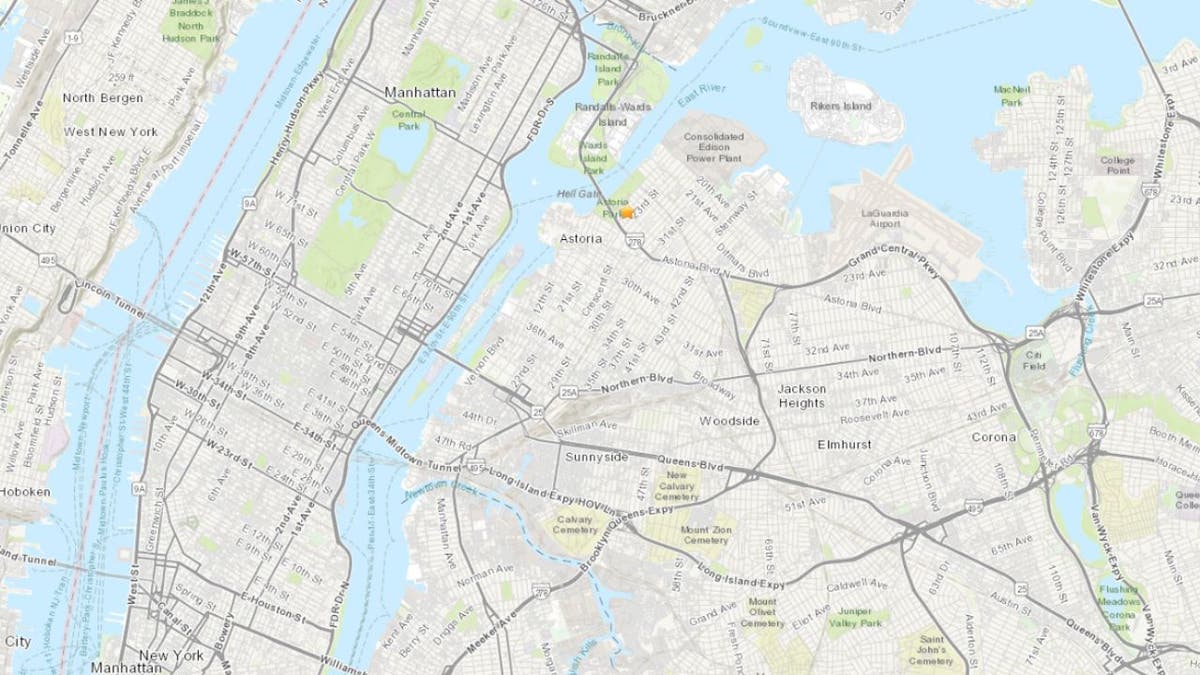A minor earthquake struck New York City on Tuesday morning, leading to buildings on the East River’s Roosevelt Island to shake and lose power.
The U.S. Geological Survey (USGS) reported a 1.7 magnitude earthquake hitting Astoria in Queens at about 5:45 a.m. It jolted residents on Roosevelt Island, who reported hearing a loud explosion, according to local reports.
The FDNY responded to reports of a “building shaking” and an “explosion” on the island, which is located to the southwest of Astoria, according to Fox 5 NY.
Officials said calls came in from the island as well as from Manhattan’s Upper East Side and Astoria.
Fox 5 NY captured an aerial shot showing several emergency response vehicles on the island this morning. A 1.7 magnitude earthquake struck New York City with residents on the East River’s Roosevelt Island reporting hearing a loud explosion and buildings shaking. (Fox 5 NY)
EARTHQUAKES IN JAPAN KILL AT LEAST 48 AS OFFICIALS RACE TO SAVE PEOPLE TRAPPED IN HOMES
No explosion was confirmed and the USGS said no injuries or damage were reported from the earthquake. New York City Mayor Eric Adams’ administration attributed the explosion reports to the quake.
“About 5:45 or so, all of a sudden I felt my bed moving, and the building moving, and a very loud sound,” resident Georgette Sinclair told FOX 5 NY. “I woke up and thought there was an earthquake.”
There were no reports of damage or injuries, according to the city’s official emergency notification system. The mayor’s office said the quake had no impact on structural stability.

A map marks the area in Astoria, Queens, where Tuesday’s earthquake struck. The U.S. Geological Survey reported a 1.7 magnitude earthquake hit the neighborhood at about 5:45 a.m. (U.S. Geological Survey )
JAPAN DOWNGRADES TSUNAMI WARNING AFTER EARTHQUAKE ROCKS REGION, AT LEAST FOUR CONFIRMED DEAD
Two buildings just south of the Roosevelt Island Bridge and Tram were experiencing power outages, including elevators being down, ABC7 reported, citing a resident.
Fox 5 NY captured an aerial shot showing several emergency response vehicles on the island this morning.
While earthquakes on the West Coast make headlines for strength and damage, they are a threat to the East Coast as well, Dr. Lucy Jones, a seismologist, told FOX 5 NY.
“An earthquake is an earthquake, no matter [where] it happens,” Jones said.

A view of the East River, with Manhattan on the left and Roosevelt Island on the right. (Education Images/Universal Images Group via Getty Images)
“The fact that earthquakes cannot be predicted is a large part of what makes them so frightening. We are much more afraid of something when we don’t know when it’s coming.”
Earthquake rates in the northeastern United States are about 50 to 200 times lower than in California, the USGS says.
Furthermore, eastern North America has older rocks, some of which formed hundreds of millions of years before those in the West, according to the USGS. These older formations have been exposed to extreme pressures and temperatures, making them harder and often denser than those found in the West.